Don't wanna be here? Send us removal request.
Text
Time Flies: Managing Remote Employee Time Tracking Challenges
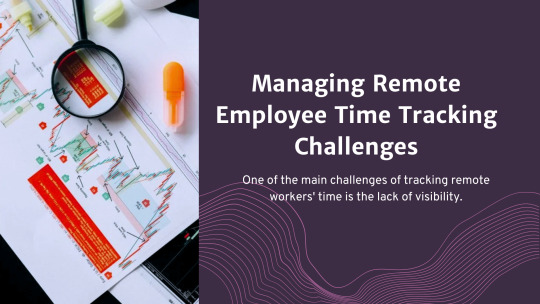
Time and productivity tracking for remote workers has become a critical task for businesses. With the rise of telecommuting, companies face new challenges in ensuring that their remote workforce remains productive and accountable. In this article, we'll explore the challenges of remote employee time tracking and how to effectively manage them.
Challenges of Tracking Remote Workers
One of the main challenges of tracking remote workers' time is the lack of visibility. Unlike in a traditional office setting, where managers can physically see employees working, remote work makes it difficult to monitor employees' activities. Concerns over accountability and productivity may arise from this lack of visibility.
Another challenge is the potential for distractions. Working from home can blur the lines between work and personal life, making it easy for employees to become distracted by household chores, family members, or personal activities. These distractions can impact productivity and make it harder to track time accurately.
Effective Time Tracking for Remote Employees
To effectively track the time of remote employees, businesses can use various tools and strategies. One popular method is to use time tracking software specifically designed for remote work. These tools allow employees to log their hours worked and track their productivity, providing managers with real-time visibility into their team's activities.
Another strategy is to establish clear expectations and guidelines for remote employees. It includes setting specific work hours, outlining tasks and deadlines, and communicating regularly with team members. By setting clear expectations, employees are more likely to stay focused and productive.
Remote Worker Time Tracker Software
Remote worker time tracker software can help businesses overcome the challenges of tracking remote employees' time. These tools offer features such as automatic time tracking, task management, and productivity monitoring. Managers can use these tools to track how much time employees spend on different tasks, identify potential bottlenecks, and make informed decisions to improve efficiency.
Remote Workforce Management Software

In addition to time-tracking software, businesses can use remote workforce management software to streamline their remote work processes. These tools offer features such as inside threat prevention, employee scheduling, performance monitoring, and collaboration tools. By using these tools, businesses can ensure that their remote workforce remains productive and accountable.
Maintaining Communication and Trust
One of the key aspects of effective time tracking for remote employees is maintaining open communication and building trust. Managers should regularly check in with remote employees to discuss their progress, address any concerns, and provide feedback. It helps build a sense of accountability and ensures that employees feel supported in their work.
Another significant factor is trust. Trusting remote employees to manage their time effectively is crucial for maintaining a positive work environment. By demonstrating trust in their employees, managers can foster a sense of responsibility and encourage employees to take ownership of their work.
Implementing Flexible Work Policies
To further support remote employees, businesses can implement flexible work policies. These policies allow employees to work at times that are most convenient for them, which can help improve work-life balance and reduce stress. Flexible work policies can also help employees manage their time more effectively, leading to increased productivity.
Utilizing Performance Metrics
In addition to time tracking, businesses can use performance metrics to evaluate the effectiveness of their remote workforce. Metrics such as project completion rates, customer satisfaction scores, and employee feedback can provide valuable insights into the performance of remote employees. By analyzing these metrics, businesses can identify areas for improvement and make data-driven decisions to enhance productivity.
Encouraging Work-Life Balance

Promoting work-life balance is essential for remote employees to avoid burnout and maintain productivity. Encourage employees to establish boundaries between work and personal life by setting specific work hours and taking regular breaks. Providing resources for mental health support can also help employees manage stress and stay motivated.
Training and Development Opportunities
Investing in training and development opportunities for remote employees can improve their skills and productivity with keystroke logging. Offer online courses, workshops, and seminars that are relevant to their roles and career goals. By investing in their professional development, employees are more likely to stay engaged and committed to their work.
Regular Performance Reviews
Conducting regular performance reviews is crucial for tracking remote employees' progress and providing constructive feedback. Use these reviews to discuss goals, address any performance issues, and recognize achievements. It helps employees stay motivated and ensures that they are meeting expectations.
Conclusion
Managing remote employee time tracking challenges requires a combination of effective tools and strategies. By using time-tracking software, setting clear expectations, and utilizing remote workforce management software, businesses can overcome the challenges of tracking remote employees' time and ensure that their remote workforce remains productive and accountable.
#Remote employee time tracking#Tracking remote workers#Remote workers time tracking#time Tracking for remote workers#Time tracking for remote employees
0 notes
Text
Elevate Your Hr Strategy With Advanced People Management Skills

The role of HR professionals has evolved significantly in today's fast-paced and competitive business environment. Beyond traditional administrative tasks, HR departments are now expected to play a strategic role in managing and developing an organization's most valuable asset - its people. To excel in this role, HR professionals need to possess advanced people management skills that go beyond basic HR functions.
Understanding the Skills of a Good Manager
At the core of effective people management lies the skills of a good manager. These skills include effective communication, conflict resolution, decision-making, and leadership. A good manager is someone who can inspire and motivate employees, resolve conflicts, and make informed decisions that benefit both the organization and its employees.
Enhancing Your Management Skills
To improve your management skills, consider investing in workforce management software and employee management tools. These tools can help you streamline HR processes, track employee performance, and identify areas for improvement. Additionally, consider enrolling in management training programs or workshops to enhance your skills further.
The Role of Workforce Management Software
Workforce management software plays a crucial role in modern HR strategy. This software helps HR professionals manage employee schedules, track attendance, and monitor performance. By leveraging workforce management software, HR professionals can streamline HR processes, improve efficiency, and enhance employee satisfaction.
Strategies to Improve Your Management Skills

To improve your management skills, consider the following strategies:
Effective Communication: Communication is key to effective people management. Practice active listening, provide constructive feedback, and communicate clearly and concisely.
Conflict Resolution: Develop skills in conflict resolution by understanding different perspectives, remaining neutral, and finding mutually beneficial solutions.
Decision-Making: Improve your decision-making skills by gathering relevant information, considering all options, and evaluating the potential outcomes.
Leadership: Develop your leadership skills by leading by example, inspiring others, and fostering a positive work environment.
Adopting a Strategic Approach to HR
To truly elevate your HR strategy, it's essential to adopt a strategic approach to HR. It means aligning HR goals with overall business objectives and focusing on long-term planning. By taking a strategic approach, HR professionals can ensure that their efforts contribute directly to the organization's success.
Leveraging Employee Management Tools
In addition to workforce management software, consider leveraging employee management tools to enhance your HR strategy. These tools can help you track employee performance, manage benefits and payroll, and improve employee engagement. By using these tools effectively, HR professionals can streamline HR processes and improve overall efficiency.
Embracing Continuous Learning and Development
To stay ahead in the rapidly evolving business landscape, HR professionals must embrace continuous learning and development. Attend workshops, seminars, and conferences to stay updated with the latest trends and best practices in HR management. Additionally, consider pursuing certifications in HR management to enhance your skills and credibility.
Cultivating Emotional Intelligence
Emotional intelligence (EI) is another crucial skill for HR professionals. EI enables you to understand and manage your emotions effectively, as well as understand and influence the emotions of others. By cultivating EI, HR professionals can improve their ability to communicate, resolve conflicts, and build strong relationships with employees.
Implementing Feedback Mechanisms

Feedback is essential for growth and improvement. Implementing feedback mechanisms within your organization can help you gather valuable insights from employees and stakeholders. Use this feedback to identify areas for improvement and make informed decisions that benefit both employees and the organization.
Leveraging Technology for HR Innovation
Technology plays a pivotal role in modern HR management. Embrace technology trends such as software usage tracking, artificial intelligence (AI), data analytics, and automation to streamline HR processes and enhance decision-making. By leveraging technology, HR professionals can improve efficiency, reduce costs, and drive innovation within their organizations.
Fostering a Culture of Diversity and Inclusion
Diversity and inclusion are not just buzzwords; they are crucial components of a successful HR strategy. HR professionals should strive to create a workplace culture that values and celebrates diversity in all its forms. It includes promoting equal opportunities for all employees, regardless of their background, and actively seeking out diverse perspectives in decision-making processes.
Developing Coaching and Mentoring Skills
Mentoring and coaching are effective strategies for staff development. HR professionals can enhance their HR strategy by developing coaching and mentoring skills. It involves providing guidance, support, and feedback to employees to help them achieve their full potential. By investing in coaching and mentoring programs, HR professionals can foster a culture of continuous learning and development within their organizations.
Conclusion
Advanced people management skills are essential for HR professionals looking to elevate their HR strategy. By investing in workforce management software, improving management skills, and adopting a strategic approach to HR, HR professionals can enhance their effectiveness and drive organizational success.
#People management skills#Workforce management software#Employee management tools#Skills of a good manager#How to improve management skills
0 notes
Text
Elevate Your Ad Game: Facebook Ads Keyword Research Techniques

Facebook campaign keyword research is a crucial element of any successful Facebook advertising campaign. By understanding how to effectively research and utilize keywords, you can significantly improve the performance and reach of your ads. In this article, we will explore some advanced techniques to elevate your Facebook ads keyword research game and achieve better results.
Understanding Facebook Keyword Research
Before diving into advanced techniques, it's essential to understand the basics of Facebook keyword research. Keywords are the words or phrases that people use when searching for products or services on Facebook. By targeting the right keywords, you can ensure that your ads are shown to the most relevant audience.
Utilizing Facebook's Ad Manager for Keyword Research
Facebook's Ad Manager is a powerful tool that can help you conduct keyword research for your ads. By using the Ad Manager's Audience Insights feature, you can gain valuable insights into the interests, demographics, and behavior of your target audience. This information can help you identify relevant keywords to target in your ads.
Leveraging Facebook's Ad Library for Keyword Inspiration
Another useful tool for Facebook keyword research is the Ad Library. By browsing through the ads of your competitors or other businesses in your industry, you can get inspiration for relevant keywords to target in your ads. The Ad Library also allows you to see which ads are performing well, giving you valuable insights into effective keyword strategies.
Using Facebook Ad Checker Tools for Keyword Optimization
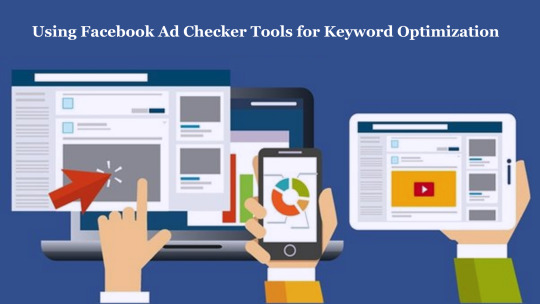
There are several Facebook Ad Checker tools available that can help you optimize your ad copy for better performance. These tools analyze your ad copy and suggest keywords that are likely to perform well based on factors such as search volume and competition. You may raise the exposure and relevancy of your advertisement by including these keywords in the copy of your advertisement.
Incorporating Long-Tail Keywords for Better Targeting
Long-tail keywords are longer, more specific phrases that are less competitive than shorter keywords. By incorporating long-tail keywords into your ad copy, you can target a more specific audience to bookmark the best ads that are more likely to convert. For example, instead of targeting the keyword "shoes," you could target the long-tail keyword "black leather running shoes for women."
Analyzing Competitor Keywords for Inspiration
One effective strategy for Facebook advertising keyword research is to analyze the keywords that your competitors are targeting. By doing so, you can gain valuable insights into the keywords that are performing well in your industry. Tools like SEMrush or SpyFu can help you identify the keywords that your competitors are ranking for, allowing you to incorporate similar keywords into your ad campaigns.
Using Facebook Pixel Data for Keyword Optimization
Facebook Pixel is a powerful tool that can provide valuable data for keyword optimization. By installing the Facebook Pixel on your website, you can track the actions of users who visit your site from your Facebook ads. This data can help you identify which keywords are driving the most conversions, allowing you to optimize your ad campaigns accordingly.
Conducting A/B Testing for Keyword Effectiveness
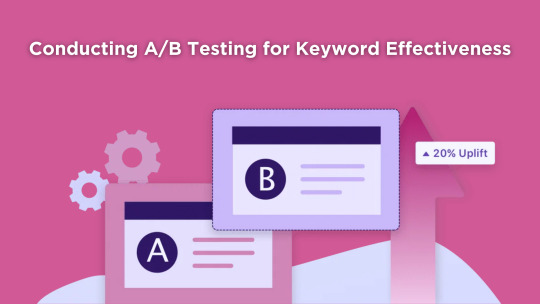
A/B testing is a great way to determine the effectiveness of different keywords in your ad campaigns. By creating multiple ad variations with different keywords and testing them against each other, you can identify which keywords are performing the best. This data can help you refine your keyword strategy and improve the performance of your Facebook ad library.
Incorporating Negative Keywords to Improve Ad Relevance
In addition to targeting relevant keywords, it's also important to incorporate negative keywords into your ad campaigns. Negative keywords are words or phrases that you don't want your ads to be shown for. By identifying and excluding irrelevant keywords, you can improve the relevance of your ads and ensure that they are shown to the most relevant audience.
The Future Of Facebook Advertising Keyword Research
The future of advertising keyword research lies in the continued evolution of tools and technologies that help marketers better understand and target their audiences. With advancements in artificial intelligence and machine learning, we can expect to see more sophisticated tools that can analyze large amounts of data to identify trends and patterns in user behavior.
One trend that is likely to shape the future of Facebook ad checkers is the increasing focus on audience intent. Rather than just targeting specific keywords, marketers will need to understand the intent behind those keywords and tailor their ad campaigns accordingly. It will require a more nuanced approach to keyword research and ad targeting.
Conclusion
The Facebook Ads keyword research is a critical component of any successful Facebook advertising campaign. By utilizing advanced techniques such as leveraging Facebook's Ad Manager and Ad Library, using Facebook Ad Checker tools, and incorporating long-tail keywords, you can elevate your ad game and achieve better results. Start implementing these techniques today and watch your Facebook ads performance soar.
0 notes
Text
The Art of Browsing Facebook Marketplace Categories

Facebook Marketplace has become a go-to destination for finding unique items, scoring great deals, and even decluttering your home. However, navigating through the vast array of categories can sometimes feel overwhelming. In this guide, we'll explore the art of browsing Facebook Marketplace categories to help you discover hidden gems and make the most of your shopping experience.
Understanding the Facebook Marketplace Category
When you first open Facebook Marketplace, you'll be greeted with a variety of categories ranging from "Home & Garden" to "Electronics" and "Vehicles." Each category is further divided into subcategories, making it easier to find exactly what you're looking for. Take your time to explore these categories and familiarize yourself with the different sections.
Browsing by Category
One of the easiest ways to browse Facebook Marketplace is by category. Simply click on the category that interests you, and you'll be presented with a list of items available for sale in that category. This method is ideal if you're looking for something specific or if you want to explore items within a particular theme.
Using Filters to Narrow Down Your Search
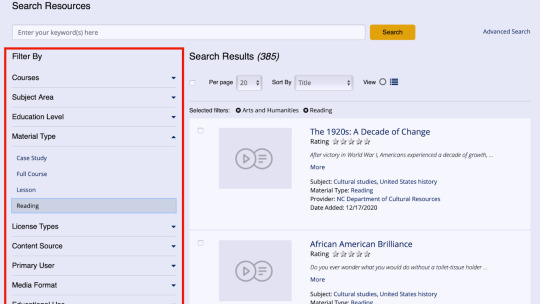
If you have a specific item in mind, using filters by ad positions can help narrow down your search. You can filter items based on price, location, condition, and more. It is particularly useful if you're looking for something specific within a category, such as a vintage item or a brand-new product.
Exploring Local Listings
One of the unique features of Facebook Marketplace is its focus on local listings. It means that you can discover items for sale from people in your area. It not only promotes a sense of community but also allows you to find items that you might not come across in traditional online stores.
Discovering Unique Items
One of the joys of browsing a Facebook Marketplace category is stumbling upon unique items that you never knew you needed. From handmade crafts to vintage collectibles, you'll find a treasure trove of items that can add character to your home or make thoughtful gifts for loved ones.
Tips for a Better Browsing Experience
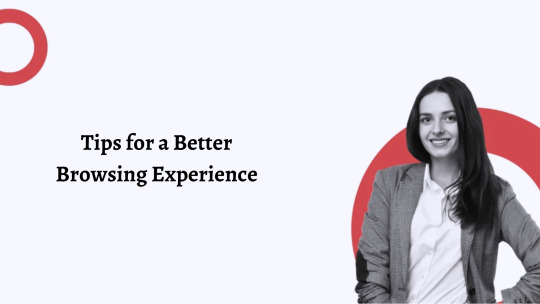
To enhance your browsing experience on Facebook audience insights, consider these three key tips:
Check Regularly: Given that listings are frequently updated, checking the marketplace regularly ensures you don't miss out on new items. By visiting the marketplace frequently, you can stay up-to-date with the latest offerings and potentially discover unique finds before others.
Set Alerts: Setting up alerts can be incredibly beneficial if you're searching for something specific. By creating alerts based on your criteria, such as item type, price range, or location, Facebook will notify you when new listings that match your preferences are posted. This feature saves you time and effort by delivering relevant listings directly to you.
Negotiate Responsibly: Negotiation is a common practice on Facebook Marketplace, but it's essential to approach it with respect and consideration. When negotiating with sellers, be fair in your offers and respectful in your communication. Building a positive rapport with sellers can lead to better deals and a more enjoyable shopping experience for both parties.
Use Detailed Filters: Facebook Marketplace offers a range of filters that can help you narrow down your search results. Utilize filters such as price range, item condition, and location to refine your search and find exactly what you're looking for more efficiently.
Explore Different Categories: Don't limit yourself to just one or two categories. Take the time to explore different categories and subcategories to discover new items and sellers. You never know what hidden gems you might find in categories you haven't explored before.
Utilize Saved Items: If you come across an item that interests you but isn't ready to make a purchase yet, consider saving it for later. Facebook Marketplace allows you to save items so you can easily find them again when you're ready to buy.
Read Seller Reviews: Before making a purchase, take the time to read reviews from other buyers who have purchased from the same seller. It can give you insight into the seller's reliability and the quality of their items.
Ask Questions: Don't be afraid to contact the seller with any inquiries you may have regarding an item. Clear communication can help you make an informed decision and ensure that the item meets your expectations.
To Sum Up
Browsing Facebook Marketplace categories can be a rewarding experience, offering a wide range of items to suit every taste and budget. By familiarizing yourself with the different categories and using filters to narrow down your search, you can discover hidden gems and enjoy a seamless shopping experience. So, next time you're looking for something special, dive into the world of a Facebook Marketplace category and uncover the perfect find.
#Facebook#Facebook Ads#Facebook Marketing#Facebook marketing campaigns#Facebook Marketplace Categories
0 notes
Text
Empowering Connections: Enhancing Employer Employee Relationships

Organizational success relies heavily on building strong connections between employers and employees in today's dynamic workplace. Positive employer employee relations go beyond traditional roles and responsibilities; they embody mutual respect, trust, and understanding. This article explores the significance of enhancing these connections and provides actionable strategies to improve employer-employee relationships.
Understanding Employer-Employee Relations
Employer-employee relation refer to the interactions and dynamics between employers and their employees. It encompasses the professional relationship that exists in the workplace, which influences the overall work environment, employee morale, and productivity. A healthy employer-employee relationship is characterized by open communication, mutual respect, and a shared commitment to organizational goals.
Benefits of Strong Employer-Employee Relationships

Enhanced Productivity: Strong employer-employee relationships create a sense of value and respect, motivating employees to perform at their best. When employees feel appreciated, they are more likely to be engaged in their work and strive for excellence. It increases motivation and dedication and can lead to higher productivity and efficiency in the workplace. Employees who feel supported by their employers are also more likely to be proactive in finding ways to improve processes and contribute positively to the organization's goals.
Improved Employee Morale: A positive work environment, fostered by strong employer-employee relationships, can significantly impact employee morale. When employees feel valued and respected, they are more satisfied with their jobs and more likely to be happy at work. It can result in reduced absenteeism and turnover rates, as employees are less likely to seek opportunities elsewhere when they are content in their current roles. Additionally, high morale can create a more cohesive and supportive team environment with project management, where employees are more willing to collaborate and help each other succeed.
Effective Conflict Resolution: Strong relationships between employers and employees enable open and honest communication, which is essential for effective conflict resolution. When conflicts arise, employees feel more comfortable discussing their concerns with their employers, leading to quicker and more amicable resolutions. It can prevent small issues from escalating into larger problems that can disrupt the work environment and negatively impact productivity. Employers may keep a happy and peaceful work environment by quickly and effectively resolving problems.
Increased Employee Engagement: Employees who have positive relationships with their employers are more likely to be engaged in their work. They are more committed to the organization's goals and are willing to go above and beyond to contribute to its success. Engaged employees are also more likely to be innovative and creative, as they feel empowered to share their ideas and take risks. This increased engagement can lead to higher levels of performance and productivity, benefiting both the employees and the organization.
Strategies for Enhancing Employer-Employee Relationships
Open Communication: Encourage open and transparent communication between employers and employees. Provide regular feedback and opportunities for employees to voice their opinions and concerns.
Build Trust: Trust is the foundation of any relationship. Be honest, fair, and consistent in your interactions with employees. Trust can take time to build but is essential for a strong employer-employee relationship.
Recognize and Reward: Acknowledge the efforts and achievements of employees. Recognizing their contributions shows that you value their work and can boost morale and motivation.
Professional Development: Invest in the professional development of your employees. Offer training and growth opportunities to help them enhance their skills and advance in their careers.
Work-Life Balance: Support a healthy work-life balance for your employees. Encourage them to take breaks and vacations to avoid burnout and maintain their well-being.
Future Of The Employer-Employee Relation

The future of employer-employee relationships lies in leveraging technology to enhance communication and collaboration. With the rise of remote work management and digital communication tools, employers must find innovative ways to build strong relationships with their remote teams. It includes utilizing virtual team-building activities, implementing digital feedback mechanisms, and fostering a culture of trust and transparency. Additionally, the future will see a greater emphasis on employee well-being and work-life balance, as organizations recognize the importance of supporting their employees' holistic needs. Overall, the future of employer-employee relationships will be characterized by a blend of technology-driven solutions and a human-centric approach to workforce management.
Conclusion
Empowering connections between employers and employees is key to creating a positive and productive work environment. By fostering strong employer employee relationships through open communication, trust-building, recognition, and support for professional development, organizations can enhance employee engagement, morale, and overall performance. Investing in these relationships is not only beneficial for employees but also for the organization as a whole.
#employer employee relations#professional relationship#employer employee relation#employee relations#employer and employee relationship
0 notes
Text
13 Steps to Streamline Employee Performance Tracking

Employee performance monitoring is essential for businesses to ensure productivity and efficiency. However, manual tracking processes can be time-consuming and prone to errors. By streamlining the process, businesses can save time and resources while improving accuracy. Here are 13 steps to streamline employee performance tracking using workforce management tools and performance trackers:
Define Clear Goals and Expectations
Establishing clear goals and expectations is crucial for an effective employee performance tracker. By defining specific, measurable, achievable, relevant, and time-bound (SMART) goals, employees understand what is expected of them. This clarity fosters motivation and accountability, leading to improved performance.
Choose the Right Workforce Management Tool
Selecting the right workforce management tool is essential for streamlining performance tracking. Look for a tool that aligns with your organization's needs and goals. Features such as time tracking, task management, and performance analytics can help you track employee performance accurately and efficiently.
Implement an Employee Performance Tracker
Using an employee performance tracker allows you to monitor progress toward goals and track key performance indicators (KPIs) relevant to each employee's role. It helps you identify areas for improvement and provide targeted feedback.
Provide Regular Feedback
Regular feedback sessions are essential for keeping employees informed about their performance. Use the performance tracker to provide specific and constructive feedback, highlighting areas of strength and areas for improvement.
Encourage Employee Self-Assessment

Encouraging employees to assess their performance can lead to greater self-awareness and motivation. Use self-assessment as a tool for employee development and improvement, allowing employees to take ownership of their performance.
Offer Training and Development Opportunities
Providing training and development opportunities shows employees that you are invested in their growth. Use the performance tracker to identify areas where training is needed, helping employees improve their skills and performance.
Use Performance Data for Decision-Making
Using data from the performance tracker allows you to make informed decisions about employee performance. Identify trends and patterns to improve overall performance, helping you allocate resources effectively.
Automate Performance Tracking Processes
Automating performance-tracking processes can save time and reduce errors. Use automation to streamline tasks such as attendance monitoring and performance reviews, freeing up time for more strategic activities.
Integrate Performance Tracking with Other Systems
Integrating performance tracking with other systems, such as payroll and HR systems, ensures that data is shared seamlessly between systems. This integration reduces duplication of effort and improves data accuracy.
Review and Improve the Process Regularly
Regularly reviewing the performance tracking process allows you to identify areas for improvement. Solicit feedback from employees and managers to make the process more effective, ensuring that it continues to meet the needs of your organization.
Define Clear Goals and Expectations

Establishing clear goals and expectations is fundamental for an effective employee team tracking software. Clear goals provide employees with a sense of direction and purpose, helping them understand what is expected of them. When setting goals, ensure they are specific, measurable, achievable, relevant, and time-bound (SMART). This clarity not only helps employees focus their efforts but also allows managers to assess performance objectively. Additionally, clear expectations help prevent misunderstandings and promote a positive work environment based on transparency and accountability.
Choose the Right Workforce Management Tool
Selecting the right workforce management tool is essential for streamlining performance tracking and enhancing productivity. When choosing a tool, consider your organization's specific needs and goals. Look for features such as time tracking, task management, and performance analytics. These features can help you track employee performance more effectively, identify areas for improvement, and allocate resources efficiently. By investing in the right tool, you can streamline your performance-tracking processes and drive better business outcomes.
Implement an Employee Performance Tracker
Implementing an employee performance tracker can provide valuable insights into employee performance and help you make informed decisions. A performance tracker allows you to monitor progress toward goals and track key performance indicators (KPIs) relevant to each employee's role. By regularly reviewing performance data, you can identify trends, recognize top performers, and address performance issues proactively. This data-driven approach can lead to improved employee engagement, productivity, and overall business performance.
Conclusion
Streamlining employee performance tracking is crucial for organizations seeking to enhance productivity, efficiency, and employee engagement. By following the 13 steps outlined above, businesses can create a structured approach to performance tracking that promotes transparency, accountability, and continuous improvement.
#employee performance tracking#performance tracker#employee performance tracker#performance tracking#track employee performance
0 notes
Text
Responsibility vs Accountability: How They Intersect and Diverge

Responsibility and accountability are often used interchangeably, but they are distinct concepts that play crucial roles in personal and professional settings. Understanding the difference between responsibility and accountability is essential for effective leadership, teamwork, and personal development. In this article, we will explore the definitions of responsibility vs accountability, how they intersect and diverge, and provide examples to illustrate their practical applications.
Responsibility: Definition and Examples
Responsibility refers to the duties and tasks that an individual is expected to perform. It is the obligation to act or decide in a particular way, often with a focus on completing tasks or achieving goals. Responsibilities can be assigned by an authority figure, such as a manager, or they can be inherent to a role or position.
For example, in a workplace setting, an employee may have the responsibility to complete a project by a certain deadline. In this case, the employee is expected to fulfill their duties by working diligently and meeting the deadline.
Accountability: Definition and Examples
Accountability, on the other hand, is the obligation to answer for the outcomes of one's actions. It entails accepting responsibility for the outcomes, whether favorable or unfavorable. Accountability is often associated with consequences, as individuals are held responsible for the impact of their decisions and actions.
For instance, if a project fails to meet its goals, the project manager may be held accountable for the outcome. They may be required to explain why the project failed and to take corrective actions to address the issues.
Intersection and Divergence

While responsibility and accountability are related, they are not synonymous. Responsibility focuses on the actions and tasks that need to be performed, while accountability centers on the outcomes and consequences of those actions. However, they intersect in the sense that individuals who are responsible for a task are often also held accountable for its success or failure.
For example, in the workplace, an employee may be responsible for completing a project, but the project manager is ultimately accountable for the project's success. The employee's responsibility is to perform their tasks to the best of their ability, while the project manager's accountability is to ensure that the project meets its goals and objectives.
Examples of Being Responsible
Completing tasks assigned by a supervisor
Meeting deadlines for projects
Following company policies and procedures
Taking ownership of mistakes and working to correct them
Employee Productivity and Monitoring Software
Employee productivity is a crucial aspect of organizational success, and many companies use employee user activity monitoring software to track and improve productivity levels. These tools can help managers assess how employees are spending their time, identify areas for improvement, and ensure that responsibilities are being met.
For example, employee productivity tracker software can provide insights into how much time employees are spending on different tasks, allowing managers to identify bottlenecks or inefficiencies. Its information can then be used to make informed decisions about resource allocation and process improvement.
Responsibility in Personal Relationships
In personal relationships, responsibility often involves taking care of one another's emotional and physical needs. For example, in a romantic relationship, partners may have the responsibility to communicate openly, show respect, and support each other through challenges. Accountability in this context may involve taking responsibility for one's actions that may have hurt the other person and working towards resolution and growth in the relationship.
Accountability in Government and Public Service

In the context of government and public service, accountability is crucial for maintaining trust and transparency. Elected officials and public servants are accountable to the public for their actions and decisions with employee engagement productivity. It includes being transparent about how taxpayer money is spent and taking responsibility for any failures or shortcomings in delivering services to the public.
Responsibility in Environmental Conservation
In the context of environmental conservation, individuals and organizations have a responsibility to protect and preserve the environment. It includes reducing waste, conserving natural resources, and minimizing pollution. Accountability in this context involves holding individuals and organizations responsible for their impact on the environment and taking action to mitigate negative effects.
Accountability in Business Ethics
In business ethics, accountability involves ensuring that businesses operate ethically and by legal and regulatory requirements. It includes being accountable for the impact of business practices on employees, customers, and the community. Responsibility in this context may involve implementing ethical business practices, such as fair labor practices and environmental sustainability initiatives.
The Final Wordings
Responsibility and accountability are essential concepts that play a significant role in personal and professional life. Despite their similarities, they are separate ideas that call for various strategies. Comprehending the distinction between responsibility vs accountability is essential for proficient leadership, collaboration, and individual growth.
#Responsibility#Accountability#Responsibility vs accountability#Employee productivity#Employee productivity tracker
0 notes
Text
Time Mastery For Enhanced Time Management Goal Examples

Time management is crucial for productivity and success, both in personal and professional life. Effective time management involves setting clear goals and priorities, managing distractions, and using tools like time management goal examples tracker software and workforce management software. Here, we'll explore how mastering time can lead to enhanced productivity with examples of time management goals.
Understanding Time Mastery
Time mastery is the ability to effectively manage your time to achieve your goals. It involves setting SMART goals, prioritizing tasks, and using tools to track and manage time efficiently. By mastering time, you can improve productivity, reduce stress, and achieve a better work-life balance.
SMART Goals for Time Management

Specific: Goals should be clear and specific, answering the questions of who, what, when, where, why, and how. Rather than stating "I want to be more productive," an example of a particular objective would be "I will finish the project report by Friday."
Measurable: To monitor and assess progress, goals ought to be measurable. It helps in staying motivated and focused. For instance, "I will reduce time spent on social media by 30 minutes per day" is measurable because you can track the time spent and see if you are meeting your goal.
Achievable: Goals should be realistic and attainable. While it's good to set challenging goals, they should also be within reach. For example, "I will attend a time management workshop to learn new strategies" is achievable because attending a workshop is within your control.
Relevant: Goals should be relevant to your overall objectives and aligned with your values and long-term goals. For instance, "I will prioritize tasks based on their importance and impact on my goals" is relevant because it directly contributes to better time tracking.
Time-bound: Goals should have a deadline or timeframe. It creates a sense of urgency and helps in prioritizing tasks. For example, "I will finish reading the book by the end of the month" has a clear time frame, which makes it time-bound.
By setting SMART goals, you can increase your chances of success by making your goals more focused, measurable, and achievable.
Examples of Time Management Goals
Improve Task Prioritization: This goal involves using a priority matrix, such as the Eisenhower Matrix, to categorize tasks based on urgency and importance. By focusing on high-priority tasks first, you can ensure that you are working on the most important things and avoid wasting time on less important tasks.
Reduce Procrastination: The goal here is to use the Pomodoro Technique, a time management method that involves working in focused intervals (usually 25 minutes) followed by a short break (usually 5 minutes). This technique helps in breaking tasks into manageable intervals and can reduce the tendency to procrastinate.
Enhance Focus: To enhance focus, the goal is to create a distraction-free work environment. This can be achieved by turning off notifications on your phone and computer, as well as limiting multitasking. You can increase your productivity and level of focus by reducing outside distractions.
Optimize Meetings: This goal involves setting clear agendas for meetings and keeping them concise. By doing so, you can ensure that meetings are productive and time-efficient. Clear agendas help in staying focused and can prevent meetings from going off track.
Delegate Tasks: The goal of delegating tasks is to free up time for more important responsibilities. By delegating tasks that can be done by others, you can focus on tasks that require your expertise and attention, thereby improving your overall efficiency.
These examples demonstrate how setting specific time management goals can help you improve your productivity and manage your time more effectively.
Time Tracker Software for Employees
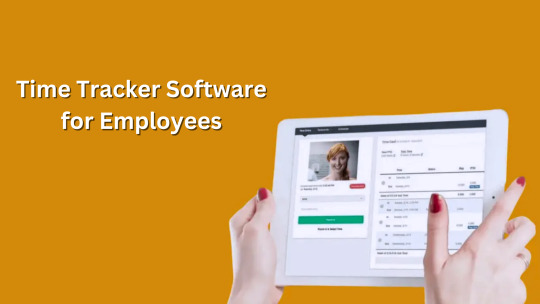
Time tracker software for employees is a valuable tool used to monitor and manage time spent on tasks. It allows employers to track employee retention productivity, identify time-wasting activities, and improve overall efficiency. These software solutions offer features such as time tracking, task management, and reporting, enabling businesses to optimize their workforce's time usage. Popular options in this category include Toggl, Harvest, and Clockify, each offering unique features and capabilities to meet the specific needs of different organizations. Overall, time tracker software plays a crucial role in helping businesses manage their resources more effectively and improve their bottom line.
Workforce Management Software
Workforce management software helps businesses manage their workforce more efficiently. It includes features such as scheduling, time tracking, and performance monitoring. Examples of workforce management software include Kronos, ADP, and BambooHR.
Final Reflections
Mastering time is essential for enhancing productivity and achieving your goals. By setting SMART goals, using time management goal examples, and optimizing your workflow with workforce management software, you can take control of your time and accomplish more in less time.
#Time management goal examples#Smart goal for time management#Time tracker software for employees#Workforce management software#Employee time tracking software
0 notes
Text
Nurturing Your Team: Tips for Developing an Employee Wellbeing Strategy

In today's fast-paced and demanding work environments, employee wellbeing has become a critical factor in maintaining a healthy and productive workforce. A well-thought-out employee wellbeing strategy can help organizations foster a culture of health, happiness, and productivity among their employees. In this article, we will discuss some tips for developing an effective employee engagement wellbeing strategy that can help enhance employee engagement, performance, and overall satisfaction.
Understanding Employee Wellbeing
The physical, mental, and emotional well-being of workers is included in the concept of employee wellness. It includes factors such as work-life balance, job satisfaction, stress management, and physical health. To develop an effective employee wellbeing and performance strategy, it is essential to understand the unique needs and challenges faced by your workforce.
Employee Engagement and Wellbeing
Employee engagement plays a crucial role in employee wellbeing. Engaged employees are more likely to feel satisfied with their jobs, have higher levels of morale, and perform better at work. To enhance employee engagement and wellbeing, organizations can consider implementing initiatives such as regular feedback sessions, recognition programs, and opportunities for career development.
Employee Wellbeing and Performance
There is a strong correlation between employee wellbeing and performance. Employees who feel supported and valued by their organizations are more likely to be motivated to perform at their best. By prioritizing employee wellbeing, organizations can create a positive work environment that fosters high performance and productivity.
Employee Wellbeing Initiatives

Developing employee wellbeing time tracking requires a holistic approach that addresses various aspects of employee wellbeing. Some common employee wellbeing initiatives include:
Flexible work arrangements: Offering flexible work hours or remote work options can help employees better manage their work-life balance and reduce stress.
Wellness programs: Implementing wellness programs such as fitness challenges, mindfulness sessions, or nutrition workshops can promote physical and mental health among employees.
Employee assistance programs (EAPs): EAPs provide employees with access to confidential counseling and support services to help them cope with personal or work-related issues.
Creating a Supportive Work Environment
Creating a supportive work environment is key to promoting employee wellbeing. This includes fostering open communication, providing opportunities for professional growth and development, and promoting a culture of respect and inclusivity. By creating a supportive work environment, organizations can help employees feel valued, respected, and motivated to perform at their best.
Encouraging Work-Life Balance
Work-life balance is essential for maintaining employee wellbeing. Encouraging employees to prioritize their personal lives outside of work can help prevent burnout and improve overall job satisfaction. Organizations can support work-life balance by offering flexible work arrangements, promoting time-off policies, and encouraging employees to disconnect from work during non-working hours.
Providing Mental Health Support
Mental health is a critical component of employee wellbeing. Organizations can provide mental health support by offering access to counseling services, promoting mental health awareness, and creating a supportive environment where employees feel comfortable discussing mental health issues. By prioritizing mental health support, organizations can help reduce stigma and improve overall employee wellbeing.
Offering Financial Wellness Programs

Financial stress can significantly impact employee wellbeing. Offering financial wellness programs, such as financial planning workshops or access to financial advisors, can help employees better manage their finances and reduce stress. By addressing financial wellness, organizations can improve overall employee wellbeing and job satisfaction.
Regularly Evaluating and Adjusting the Strategy
Developing an employee wellbeing & performance strategy is not a one-time process with flexible holiday policy. It is essential to regularly evaluate the effectiveness of the strategy and make adjustments as needed. This can involve collecting feedback from employees, monitoring key performance indicators related to wellbeing, and staying informed about best practices in employee wellbeing. By regularly evaluating and adjusting the strategy, organizations can ensure that it remains relevant and effective in promoting employee wellbeing.
Employee Performance Monitoring
Employee performance monitoring is an essential aspect of any employee wellbeing initiatives strategy. By regularly monitoring employee performance, organizations can identify potential issues early on and take proactive measures to address them. Performance monitoring software can help organizations track employee performance metrics and provide insights into areas where improvement may be needed.
Conclusion
Developing an employee wellbeing strategy is essential for organizations looking to create a positive work environment that supports the health, happiness, and productivity of their employees. By understanding the importance of employee wellbeing, implementing relevant initiatives, and regularly monitoring employee performance, organizations can nurture their teams and create a culture of wellbeing that benefits both employees and the organization as a whole.
#employee wellbeing strategy#employee engagement and wellbeing#employee wellbeing and performance#employee wellbeing initiatives#employee performance monitoring
0 notes
Text
Take Charge Of Your Finances: Track Billable Hours With Ease

Modern business requires a close eye on finances due to its dynamic nature. One key aspect of financial management, especially for service-based businesses, is tracking billable hours. This practice not only ensures accurate client billing but also provides valuable insights into employee productivity and project efficiency. Fortunately, with the right tools and strategies, mastering to track billable hours can be both straightforward and efficient.
Understanding the Importance of Billable Hours Tracking:
Before delving into the how-to aspect, it's crucial to understand why tracking billable hours is so essential. Essentially, billable hours represent the time spent by employees on tasks or projects that can be billed to clients. By accurately tracking these hours, businesses can ensure they are billing clients correctly, leading to improved cash flow and profitability.
Moreover, billable hours tracking offers insights into employee productivity and project performance. It enables businesses to identify inefficiencies, allocate resources effectively, and optimize workflows for better outcomes. Additionally, it serves as a valuable tool for evaluating project profitability and making informed decisions about resource allocation and pricing strategies.
Choosing the Right Tracking Tool:

With the advancement of technology, numerous tools and software solutions are available to streamline billable hours tracking. When selecting a tool, consider factors such as ease of use, compatibility with existing systems, features offered, and scalability. Look for a solution that offers robust time-tracking capabilities, customizable reporting options, and integration with accounting software for seamless invoicing.
Some popular options include dedicated billable hours tracking software, employee productivity trackers, and employee user activity monitoring software. These tools not only automate the tracking process but also provide valuable insights into employee behavior, work patterns, and project progress.
Implementing Effective Tracking Practices
Once you've chosen a suitable tracking tool, it's essential to establish clear guidelines and best practices for your team. Communicate the importance of accurate time tracking and provide training on how to use the chosen software effectively. Encourage employees to track their time diligently and consistently, emphasizing the impact it has on client billing and overall business performance.
Consider implementing remote employee time-tracking solutions, especially in today's increasingly remote work environment. These tools enable businesses to monitor employee activity and tracking billable hours accurately, regardless of their location. However, it's crucial to balance the benefits of remote monitoring with respect for employee privacy and autonomy.
Furthermore, leverage the data collected from billable hours tracking to optimize resource allocation, identify bottlenecks, and improve project management processes. Regularly review reports and analyze trends to identify areas for improvement and implement proactive measures to enhance efficiency and profitability.
Maximizing the Benefits of Billable Hours Tracking:

Beyond its immediate benefits for client billing and project management, billable hours tracking can have long-term implications for business success. By fostering a culture of accountability and transparency, businesses can improve employee satisfaction and retention. When employees understand how their time contributes to the bottom line, they are more motivated to work efficiently and effectively.
Additionally, accurate time tracking provides businesses with valuable data for making strategic decisions and planning for future growth. Whether it's identifying opportunities for service expansion, optimizing pricing structures, or forecasting resource needs, the insights gained from billable hours tracking can inform critical business strategies.
Expanding on the benefits of employee time tracking software, businesses can gain deeper insights into employee productivity and performance. These tools offer features such as activity tracking, screen monitoring, and app usage analysis, providing managers with a comprehensive view of how time is spent during work hours. By identifying inefficiencies and areas for improvement, businesses can optimize workflows, enhance team collaboration, and drive productivity.
Furthermore, employee monitoring software can help ensure compliance with company policies and regulatory requirements. By monitoring unauthorized activities and potential security threats, businesses can mitigate risks and protect sensitive information. Overall, leveraging employee monitoring software as part of a comprehensive billable hours tracking strategy can lead to improved operational efficiency and better business outcomes.
Conclusion
Mastering billable hours tracking is essential for maintaining financial control and driving business success. By leveraging the right tools and implementing effective tracking practices, businesses can streamline operations, improve client satisfaction, and maximize profitability. Moreover, embracing a data-driven approach to time tracking enables businesses to make informed decisions, optimize resource allocation, and stay ahead in today's competitive marketplace. So, take charge of your finances and empower your business with robust-to-track billable hours practices.
#Track Billable Hours#Billable Hours Tracker#Software to Track Billable Hours#Remote Employee Time Tracking#Employee Productivity Tracker
0 notes
Text
The Future of Timekeeping: Employee Cloud-Based Attendance System
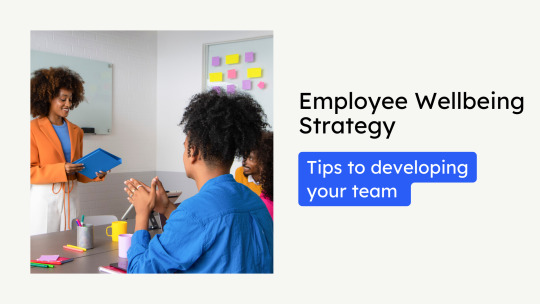
Streamlining businesses' operations and improving efficiency are constantly top priorities in today's fast-paced world. One area that has seen significant advancements is employee timekeeping. Traditional methods of tracking employee attendance, such as manual time clocks or paper timesheets, are becoming obsolete. Instead, companies are turning to cloud based attendance system to manage their workforce more effectively.
What Is A Cloud Based Attendance System?
A cloud based attendance system is a digital solution that allows businesses to track and manage employee attendance electronically. Unlike traditional systems, which require physical infrastructure and manual data entry, cloud-based systems store data securely in the cloud. It means that employees can clock in and out using their smartphones or computers, and managers can access real-time attendance data from anywhere with an internet connection.
Benefits Of Employee Cloud Based Attendance Systems
Increased Accuracy: Cloud-based attendance systems eliminate the need for manual data entry, reducing the risk of errors associated with traditional methods.
Cost-Effective: By eliminating the need for physical infrastructure and manual processes, cloud-based attendance systems can help businesses save money in the long run.
Improved Efficiency: With real-time attendance data available at their fingertips, managers can make informed decisions quickly, leading to improved operational efficiency.
Enhanced Security: To safeguard private employee data, cloud-based attendance solutions provide strong security features including authentication and encryption.
Remote Access: Managers can access attendance data from anywhere, making it easier to manage remote or distributed teams.
The Future of Employee Attendance Management System
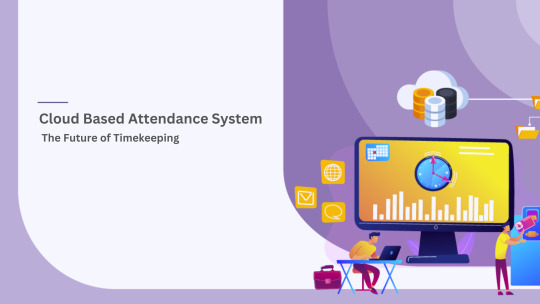
As technology continues to evolve, the future of employee attendance management systems looks promising. The following are some tendencies to be aware of:
Integration with Other HR Systems: Employee attendance systems are likely to become more integrated with other HR systems, such as payroll and project management, to provide a seamless experience for both employees and managers.
AI and Machine Learning: AI and machine learning algorithms can help predict attendance patterns and identify anomalies, allowing businesses to proactively manage attendance issues.
Mobile Apps: Mobile apps are likely to become the primary interface for employee attendance management, allowing employees to clock in and out easily from their smartphones.
Biometric Authentication: Biometric authentication, such as fingerprint or facial recognition, is likely to become more common in employee attendance systems, further enhancing security and accuracy.
The Evolution of Timekeeping Systems
Over the years, timekeeping systems have evolved significantly. From manual punch cards to sophisticated biometric scanners, the way businesses track employee attendance has undergone a dramatic transformation. One of the most significant advancements in recent years is the shift towards cloud-based attendance systems. These systems leverage the power of the cloud to provide real-time attendance tracking and management capabilities, making them a preferred choice for businesses of all sizes.
Benefits of Cloud-Based Attendance Systems
Cloud-based attendance systems offer a wide range of benefits for businesses. One of the key advantages is the ability to access attendance data from anywhere, at any time. This flexibility allows managers to make informed decisions quickly, leading to improved operational efficiency. Additionally, cloud-based systems eliminate the need for physical infrastructure and manual data entry, reducing the risk of errors and saving businesses time and money in the long run.
Future Trends in Employee Attendance Management

The future of employee attendance management is likely to be shaped by several key trends. One such trend is the integration of attendance systems with other HR systems, such as payroll and keyboard tracking with performance management. This integration will provide businesses with a more holistic view of their workforce, enabling them to make more informed decisions. Additionally, AI and machine learning are expected to play a more significant role in attendance management, helping businesses predict attendance patterns and identify potential issues before they arise.
The Role of Mobile Apps in Employee Attendance Management
Mobile apps are becoming an increasingly popular choice for employee attendance management. These apps allow employees to clock in and out using their smartphones, providing them with greater flexibility and convenience. Additionally, mobile apps can offer features such as geolocation tracking, which can help businesses ensure that employees are clocking in from the correct location. Overall, mobile apps are expected to play a more significant role in employee attendance management in the future, providing businesses with greater flexibility and convenience.
In Conclusion
Cloud-based attendance system is revolutionizing the way businesses track and manage employee attendance. With their numerous benefits and future advancements, these systems are poised to become an integral part of modern workforce management.
#Cloud based system#Attendance Monitoring#Employee attendance system#Attendance management system#Cloud based attendance system
0 notes
Text
A Productivity Game-Changer: Exploring the Benefits of Employee Assessment Tool
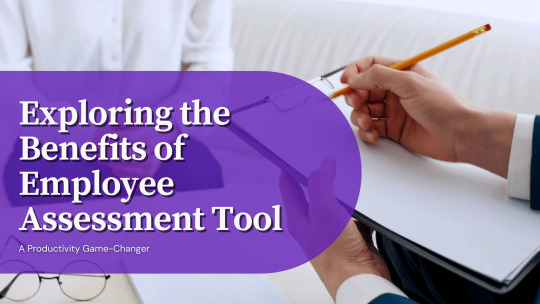
The success of any organization depends on maximizing employee productivity in today's fast-paced business environment. To achieve this, companies are increasingly turning to employee assessment software. These tools offer a range of benefits, from tracking productivity levels to identifying areas for improvement. In this article, we'll explore how an employee assessment tool can be a game-changer for your organization.
Understanding Employee Productivity Assessment Tools
Employee productivity assessment tools are software applications designed to measure and track various aspects of employee performance. These tools can help employers identify strengths and weaknesses, track progress toward goals, and provide valuable insights into employee productivity.
Benefits of Employee Productivity Assessment Software

Improved Productivity: By tracking employee performance metrics, such as task completion rates and time spent on tasks, assessment tools can help identify bottlenecks and inefficiencies. It allows organizations to take corrective action and improve overall work productivity & engagement.
Enhanced Performance Management: Employee assessment productivity software provides a systematic way to evaluate employee performance. It enables managers to provide targeted feedback and coaching, leading to improved performance over time.
Goal Setting and Monitoring: These tools enable organizations to set clear, achievable goals for employees and track their progress toward these goals. It helps keep employees motivated and focused on achieving key objectives.
Identifying Training Needs: By analyzing employee performance data, assessment tools can help identify areas where additional training or development may be beneficial. It ensures that employees have the skills and knowledge they need to perform at their best.
Data-Driven Decision-Making: Workforce assessment tools provide valuable data that can be used to inform decision-making processes. By analyzing this data, organizations can make more informed decisions about resource allocation, staffing levels, and performance management strategies.
Implementing Employee Assessment Software
To reap the benefits of workforce assessment tools, it's important to implement them effectively. These are important actions to think about:
Define Clear Objectives: Before implementing an assessment tool, clearly define what you hope to achieve. It will help ensure that the tool is aligned with your organization's goals.
Choose the Right Tool: There are many different workforce assessment software available, so it's important to choose one that meets your specific needs. Consider factors such as ease of use, compatibility with existing systems, and the level of support provided by the vendor.
Train Employees: Provide training to employees on how to use the assessment tool effectively. It will help ensure that they can make the most of its features and functionality.
Monitor and Evaluate: Regularly monitor and evaluate the effectiveness of the assessment tool. To find areas for improvement, get input from management and staff.
The Future of Employee Productivity Tools To Measure: Advancing Productivity and Performance

The workforce scheduling software has already proven to be invaluable in enhancing productivity and performance in the workplace. However, their future promises even more profound impacts as technology continues to advance. Here’s a glimpse into what the future holds for these tools:
AI-Powered Insights: As artificial intelligence (AI) becomes more sophisticated, workforce assessment tools will leverage AI algorithms to provide even deeper insights into employee performance. These tools will be able to analyze large datasets to identify patterns and trends that human managers might overlook, leading to more effective performance management strategies.
Personalized Development Plans: Future assessment tools will be able to create personalized development plans for employees based on their unique strengths and weaknesses. These plans will not only help employees improve their skills but also align their career goals with the organization's objectives.
Real-Time Feedback: With the advent of real-time data analytics, employee measurement tools will provide instantaneous feedback to employees and managers. This immediate feedback loop will enable organizations to address performance issues promptly and make quick adjustments to improve productivity.
Enhanced Data Security: As workforce assessment software collects and analyzes more sensitive data, ensuring data security will be paramount. Future tools will incorporate advanced encryption techniques and compliance measures to protect employee privacy and comply with regulations.
Integration with Other Systems: Employee assessment software will increasingly integrate with other HR systems, such as payroll and recruitment platforms. This integration will streamline HR processes and provide a more holistic view of employee performance and development.
Conclusion
An employee assessment tool can be a game-changer for organizations looking to improve productivity and performance. By providing valuable insights into employee performance and behavior, these tools enable organizations to make more informed decisions and drive better results. By implementing these tools effectively, organizations can unlock the full potential of their workforce and achieve greater success.
#Employee Assessment Tool#Productivity in the workplace#Productivity measurement tool#Tools to measure productivity#Workplace productivity
0 notes
Text
Fueling Success: How Employee Productivity Tracking Software Drives Growth
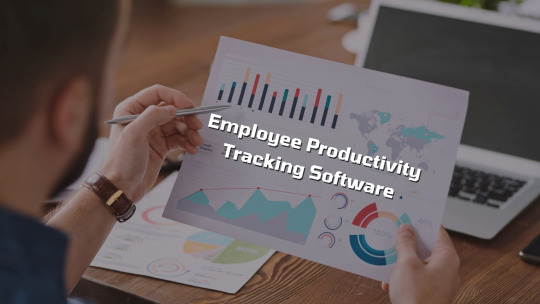
Business organizations are continually striving to enhance productivity and drive growth in today's fast-paced environment. One key tool that has emerged as a game-changer is employee productivity tracking software. This software goes beyond simply monitoring employee activities; it provides valuable insights that can fuel success and propel organizations toward their goals.
Understanding Employee Productivity Monitoring Software
Employee tracking software, also known as employee tracking software or work tracking software, is a powerful tool that allows organizations to monitor and measure the activities of their employees. This software can track various metrics, such as the time spent on different tasks, the number of tasks completed, and the overall productivity levels of employees.
Driving Productivity and Efficiency
One of the key benefits of workforce productivity tracking software is its ability to drive productivity and efficiency. By monitoring employee activities, organizations can identify inefficiencies and bottlenecks in their processes. It allows them to make informed decisions and implement changes that can improve productivity and streamline operations.
Enhancing Employee Accountability
Work-tracking software also plays a crucial role in enhancing employee accountability. When employees know that their activities are being monitored, they are more likely to stay focused and motivated. It can lead to a more productive workforce and a higher level of overall performance.
Improving Time Management

Time management is a critical factor in achieving success in any organization. Workforce productivity tracking software helps employees better manage their time by providing insights into how they are spending their time. It can help them identify areas where they can be more efficient and prioritize tasks more effectively.
Optimizing Workflows
Another key benefit of employee time tracking software is its ability to optimize workflows. By analyzing employee activities, organizations can identify opportunities to streamline processes and eliminate unnecessary steps. It can result in significant time and cost savings, as well as improved productivity.
Driving Growth and Innovation
Employee tracking software is not just about monitoring employee activities; it is also about driving growth and innovation. By providing valuable insights into employee performance, this software can help organizations identify opportunities for growth and development. It can also help them identify emerging trends and technologies that can help them stay ahead of the competition.
Fostering a Positive Work Culture
Workforce activity tracking software can also play a key role in fostering a positive work culture. By providing employees with visibility into their performance metrics, this software empowers them to take ownership of their work and strive for improvement. It can also help managers recognize and reward top performers, which can boost morale and motivation across the organization.
Ensuring Compliance and Security

In today's highly regulated business environment, ensuring compliance with relevant laws and regulations is paramount. Workforce productivity tracking software can help organizations ensure compliance by tracking employee activities and ensuring that they adhere to relevant policies and procedures. Additionally, this software can help organizations maintain data security by monitoring access to sensitive information and identifying potential security threats.
Adapting to Remote Work
The rise of remote employee time tracking work has presented new challenges for organizations, but employee activity-tracking software can help ease this transition. By providing managers with visibility into remote employees' activities, this software can help ensure that work is being completed efficiently and effectively. It can also help remote employees stay connected and engaged with their teams, which is crucial for maintaining productivity in a remote work environment.
Investing in Employee Development
Employee activity monitoring software can also help organizations invest in employee development. By identifying areas where employees may need additional training or support, this software can help organizations tailor their development programs to meet the specific needs of their workforce. It can lead to a more skilled and engaged workforce, which can drive growth and innovation within the organization.
Promoting Transparency and Trust
Employee tracking software promotes transparency and trust within an organization. When employees understand how their performance is being measured and evaluated, they are more likely to trust their managers and the organization as a whole. This transparency can lead to better communication, increased collaboration, and a stronger sense of teamwork.
Final Reflections
Employee productivity tracking software is a powerful tool that can help organizations drive growth and achieve success. By monitoring employee activities, enhancing accountability, improving time management, optimizing workflows, and driving innovation, this software can provide organizations with the insights they need to thrive in today's competitive business environment.
#Employee Productivity#employee tracking software#employee tracking#work tracking software#activity tracking software
0 notes
Text
Beyond The Surface: Exploring The Depths Of Employee Activity
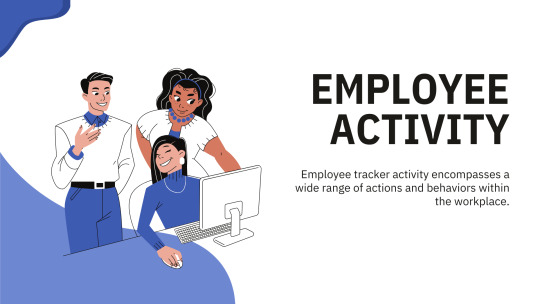
Businesses are constantly looking for ways to optimize productivity and efficiency in today's fast-paced digital age. One area that has garnered significant attention is employee activity. Beyond the surface-level tasks and projects, lies a treasure trove of insights waiting to be discovered. Let's delve deeper into the realms of employee work and explore the tools and techniques available to unearth its true potential.
Understanding Employee Tracking Activity
Employee tracker activity encompasses a wide range of actions and behaviors within the workplace. From completing tasks and attending meetings to communication patterns and collaboration efforts, each interaction contributes to the overall productivity and performance of the workforce. However, traditional methods of tracking employee work often fall short of providing comprehensive insights.
The Rise of Employee Tracker's Activity
Enter employee work tracking software – a powerful tool designed to capture and analyze various aspects of employee behavior. Whether it's monitoring computer usage, tracking time spent on specific tasks, or assessing overall productivity levels, these trackers offer a glimpse into the day-to-day activities of employees.
Unlocking Insights with Activity Tracking Software
Activity tracking software goes beyond simply monitoring keystrokes or mouse clicks. By leveraging advanced algorithms and analytics, these tools can provide valuable insights into employee behavior. From identifying patterns and trends to detecting potential bottlenecks or inefficiencies, the data collected can help organizations make informed decisions and optimize workflows.
Enhancing Productivity and Performance

One of the key benefits of employee business tracking software is its ability to identify areas for improvement. By analyzing how employees allocate their time and resources, organizations can pinpoint opportunities to streamline processes, eliminate distractions, and enhance overall productivity. Additionally, by identifying top performers and replicating their strategies, businesses can foster a culture of excellence and drive better results.
Balancing Privacy and Transparency
While the benefits of employee occupation tracking are undeniable, it's essential to strike a balance between privacy and transparency. Respecting employee privacy rights and ensuring transparency in the use of attendance tracking software is crucial to maintaining trust and fostering a positive work environment. Clear communication, establishing guidelines, and providing employees with control over their data can help alleviate concerns and build confidence in the system.
Empowering Employees with Insights
Beyond its role in optimizing organizational performance, workforce activity tracking can also empower individual employees. By providing visibility into their own behavior and productivity metrics, employees can gain valuable insights into their work habits and areas for improvement. This self-awareness can drive personal growth and development, leading to greater job satisfaction and fulfillment.
Harnessing the Power of Data
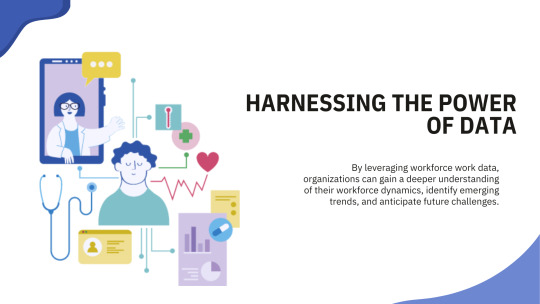
In today's data-driven world, the ability to harness and analyze vast amounts of information is a game-changer. By leveraging workforce work data, organizations can gain a deeper understanding of their workforce dynamics, identify emerging trends, and anticipate future challenges. This strategic advantage enables businesses to stay ahead of the curve and adapt to changing market conditions with agility.
The Future of Employee Tracking Activity
As technology continues to evolve, so too will the capabilities of employee occupation-tracking software. From artificial intelligence and machine learning algorithms to advanced biometric sensors, the future holds exciting possibilities for unlocking the full potential of statement of work activity data. By embracing these innovations and harnessing the power of data-driven insights, organizations can drive greater efficiency, productivity, and success.
Navigating the Depths of Employee Tracking Activity: A Continued Exploration
As we navigate the depths of employee tracking work, it becomes increasingly evident that the journey is ongoing. With each new technological advancement and organizational evolution, there are new insights to be gained and new challenges to overcome. By staying vigilant and adaptive, businesses can continue to uncover hidden efficiencies, optimize workflows, and empower their workforce for success. In this ever-changing landscape, the quest to understand and leverage workforce work remains a vital pursuit, driving continuous improvement and innovation across all facets of the modern workplace. In this pursuit lies the promise of unlocking the true potential of employee tracking work, propelling organizations toward greater heights of productivity and success.
Conclusion
Employee work tracking software represents a rich source of untapped potential for businesses seeking to optimize performance and productivity. By leveraging the capabilities of activity-tracking software and embracing a culture of transparency and accountability, organizations can unlock valuable insights and drive meaningful change. The journey beyond the surface of employee activity is one filled with opportunities for growth, innovation, and success.
#Employee activity#Employee activity tracker#Activity tracking software#Computer activity tracker#Employee tracking software
0 notes
Text
Onboarding Software for Small Business: Maximizing Efficiency and Minimizing Costs

In the competitive landscape of small businesses, efficient utilization of resources is paramount for success. One area where this efficiency can be significantly improved is in the onboarding process of new employees. Traditional methods of onboarding, such as paperwork and manual training sessions, can be time-consuming and prone to errors. However, with the advent of employee onboarding software for small business, they now have access to powerful tools that can streamline the onboarding process, maximize efficiency, and minimize costs.
The Importance of Efficient Onboarding
Effective onboarding sets the tone for an employee's entire tenure at a company. It ensures that new hires are properly integrated into the organization, understand their roles and responsibilities, and feel welcomed and supported from day one. Moreover, efficient onboarding can boost employee engagement, productivity, and retention rates, ultimately contributing to the overall success of the business.
Introducing Employee Onboarding Software
Employee onboarding software is a specialized tool designed to automate and streamline the onboarding process. From digitising paperwork to providing interactive training modules, these platforms offer a wide range of features that can significantly enhance the onboarding experience for both employers and employees.
Key Features of Employee Onboarding Software

Digital Paperwork Management: One of the most time-consuming aspects of traditional onboarding is managing paperwork. Employee onboarding software eliminates this hassle by allowing new hires to complete all necessary forms and documents online, reducing the need for manual data entry and paperwork storage.
Interactive Training Modules: Employee onboarding software often includes interactive training modules that can be customized to fit the specific needs of the business. These modules can cover everything from company policies and procedures to job-specific training, ensuring that new hires are equipped with the knowledge and skills they need to succeed.
Task Automation: With employee onboarding software, repetitive tasks such as setting up email accounts, assigning equipment, and scheduling training sessions can be automated, saving time and reducing the risk of inside threat prevention and human error.
Compliance Tracking: Compliance with local labor laws and regulations is crucial for small businesses. Employee onboarding software helps ensure compliance by automatically tracking and documenting key onboarding tasks, such as employee eligibility verification and training completion.
Integration with HR Systems: Many employee onboarding software platforms integrate seamlessly with existing HR systems, allowing for a smooth transition of data between different stages of the employee lifecycle, from recruitment to onboarding to ongoing management.
Choosing the Best Employee Onboarding Software
When selecting employee onboarding software for your small business, it's essential to consider factors such as ease of use, scalability, cost-effectiveness, and customer support. Look for a platform that offers the features you need without unnecessary complexity, and consider whether the software can grow with your business as it expands.
Workforce Management Tools
In addition to employee onboarding software, small businesses can benefit from a variety of workforce management tools designed to optimize staffing levels, scheduling, and performance tracking. These tools can help small businesses maximize productivity, minimize labor costs, and ensure compliance with labor laws and regulations.
Staff Management Tools
Staff management tools offer features such as time and attendance tracking, shift scheduling, and performance management. By automating these tasks, small businesses can streamline their operations, reduce administrative overhead, and improve employee accountability and satisfaction.
Future of Employee Onboarding Software for Small Firms

As technology continues to evolve at a rapid pace, the future of employee onboarding best practices software for small companies holds even more promise. With advancements in artificial intelligence (AI), machine learning, and data analytics, these platforms will become even more intelligent and intuitive, offering personalized onboarding experiences tailored to the individual needs of each employee.
In the future, employee onboarding software may incorporate predictive analytics to anticipate the needs of new hires and proactively provide relevant information and resources. AI-powered chatbots could offer real-time assistance and support throughout the onboarding process, answering questions, guiding employees through tasks, and facilitating communication with HR and managers.
The Final Wordings
Employee onboarding software for small business is a powerful tool that you are looking to maximize efficiency and minimize costs. By automating repetitive tasks, providing interactive training modules, and ensuring compliance with labor laws and regulations, employee onboarding software can help small businesses set the stage for success from day one. Combined with workforce management and staff management tools, employee onboarding software can help small businesses optimize their operations, enhance productivity, and drive growth in today's competitive market.
#Onboarding#Onboarding Software for small business#Workforce#employee onboarding software#staff management tools
0 notes
Text
Virtual Witness: Solving Mysteries with Computer Activity Tracker
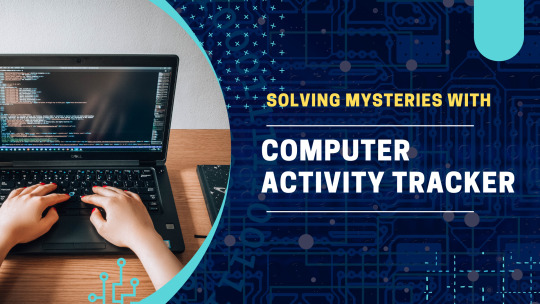
In the realm of solving mysteries, technology has become an indispensable tool. While detectives of old relied on keen observation and meticulous note-taking, modern investigators have a powerful ally in the form of computer activity tracker software. These virtual witnesses provide valuable insights into the actions and behaviors of individuals, shedding light on otherwise opaque situations.
The Rise of Computer Activity Tracking
With the proliferation of digital devices in both personal and professional settings, the need to monitor and track computer activity has never been greater. Whether it's ensuring productivity in the workplace or investigating suspicious behavior, computer activity tracking has become a crucial aspect of modern life.
Understanding Computer Activity Tracking
Computer activity tracking software monitors and records various actions performed on a computer. This can include websites visited, applications used, documents accessed, and even keystrokes typed. By compiling this data into comprehensive reports, investigators can reconstruct timelines and uncover patterns of behavior.
Solving Workplace Mysteries

One of the most common applications of computer activity tracking is in the workplace. Employers utilize employee monitoring software to monitor employee productivity, identify potential security breaches, and investigate incidents of misconduct. For example, if sensitive information is leaked, computer activity tracking can pinpoint the source of the breach and provide valuable evidence for disciplinary action or legal proceedings.
Enhancing Security Measures
In addition to monitoring employee behavior, computer activity tracking plays a vital role in enhancing overall security measures. By identifying unauthorized access attempts, detecting malware infections, and flagging suspicious activity, tracking software helps safeguard sensitive data and prevent cybersecurity threats.
Uncovering Digital Footprints
Just as every physical action leaves behind a trace, every digital interaction leaves behind a digital footprint. Computer activity tracking allows investigators to follow these digital breadcrumbs, piecing together a comprehensive picture of an individual's online behavior. It can be invaluable in criminal investigations, corporate espionage cases, and various other scenarios where digital evidence is crucial.
Balancing Privacy and Oversight
While the benefits of computer activity tracking are undeniable, it also raises important questions about privacy and oversight. Employers must strike a balance between monitoring employee activity for legitimate purposes and respecting their right to privacy. Implementing clear policies and safeguards, such as obtaining informed consent and restricting access to sensitive data, can help mitigate concerns and foster trust within the workplace.
Ensuring Compliance and Accountability
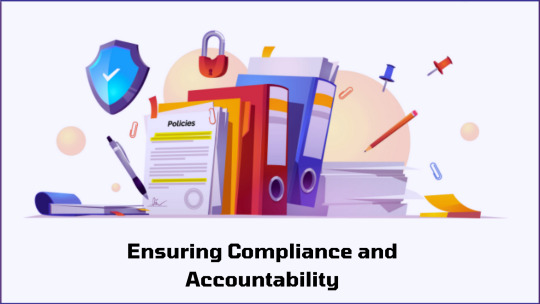
In regulated industries such as finance, healthcare, and law, compliance with industry standards and regulations is paramount. Computer activity tracking software helps organizations ensure compliance by monitoring employee productivity actions and enforcing adherence to established protocols. Additionally, it promotes accountability by providing a transparent record of activities, mitigating the risk of fraud or misconduct.
The Future of Computer Activity Tracking
As technology continues to evolve, so too will the capabilities of computer activity-tracking software. Advancements in artificial intelligence and machine learning will enable more sophisticated analysis of data, allowing investigators to uncover insights and patterns that were previously inaccessible. However, with these advancements come new challenges and ethical considerations, underscoring the importance of responsible use and oversight.
In Conclusion
In an increasingly digitized world, computer activity tracking has emerged as a powerful tool for solving mysteries and uncovering insights. From workplace productivity to cybersecurity, its applications are diverse and far-reaching. However, it is essential to approach its use with caution, balancing the need for oversight with respect for privacy and individual rights. By harnessing the power of virtual witnesses, we can navigate the complexities of the digital age and unlock solutions to the most challenging mysteries.
Exploring New Horizons
Looking ahead, the potential of a computer activity tracker extends beyond its current applications. In the realm of law enforcement, for instance, it holds promise as a tool for tracking and apprehending cybercriminals. By analyzing patterns of online activity, investigators can identify suspects and gather evidence to build stronger cases. Similarly, in the field of psychology, computer activity tracking offers opportunities for understanding human behavior in unprecedented ways. Researchers can use data gathered from digital interactions to gain insights into cognitive processes, emotional states, and social dynamics. As technology continues to advance, the possibilities for computer activity tracking are limited only by our imagination. By embracing innovation and harnessing the power of virtual witnesses, we can unlock new horizons and propel society into a future where mysteries are solved with greater precision and insight than ever before.
#Computer Activity Tracker#Employee Tracking#tracking computer activity#computer activity tracking#work tracking software
0 notes
Text
The Power of a Holistic Employee Wellbeing Strategy
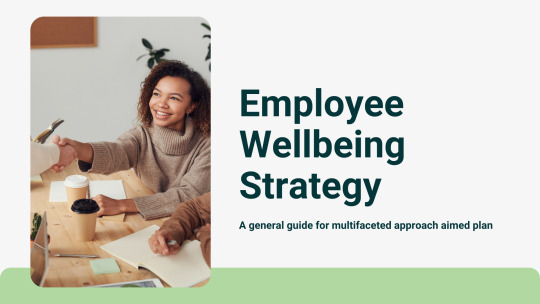
In today's competitive business landscape, companies are increasingly recognizing the pivotal role that employee wellbeing plays in achieving organizational success. Beyond mere perks and benefits, a holistic employee wellbeing strategy encompasses a multifaceted approach aimed at nurturing the physical, mental, and emotional health of employees. By prioritizing the wellbeing of their workforce, organizations can drive higher levels of employee engagement, enhance performance, and foster a thriving workplace culture.
Understanding Employee Wellbeing Strategies
Employee wellbeing strategies encompass a range of initiatives designed to support employees in various aspects of their lives. These strategies go beyond traditional healthcare benefits to address factors such as work-life balance, mental health support, professional development opportunities, and financial wellness programs. By taking a comprehensive approach, organizations can create an environment where employees feel valued, supported, and empowered to perform at their best.
The Link Between Employee Engagement and Wellbeing
Employee engagement and wellbeing are deeply interconnected. Engaged employees are those who feel a sense of connection to their work, their colleagues, and the organization as a whole. When employees are physically and mentally healthy, they are more likely to be engaged in their work, leading to higher levels of productivity, creativity, and innovation. Robust employee wellbeing strategies can therefore catalyze increased engagement, driving positive outcomes for both employees and the organization.
Enhancing Performance Through Wellbeing

Employee wellbeing directly impacts performance. When employees feel well-supported and cared for, they are better equipped to meet the demands of their roles effectively. Conversely, when wellbeing is neglected, productivity may suffer, leading to decreased performance and increased absenteeism with project management. By investing in employee wellbeing initiatives, organizations can create an environment where employees can thrive, resulting in improved performance across the board.
Implementing Employee Wellbeing Initiatives
Effective employee wellbeing initiatives require a strategic approach. Organizations can start by conducting assessments to identify areas of need and interest among their workforce. It might involve surveys, focus groups, or one-on-one discussions to gather feedback and insights. Armed with this information, organizations can then design and implement targeted initiatives that address the specific needs of their employees.
Monitoring Performance and Wellbeing
Performance monitoring software can be a valuable tool in assessing the effectiveness of employee wellbeing initiatives. By tracking key metrics such as productivity, engagement, and absenteeism, organizations can gain valuable insights into the impact of their wellbeing programs. This data can inform future decision-making and help organizations continuously refine and improve their strategies.
Creating a Culture of Wellbeing

Ultimately, the goal of employee productivity tracker wellbeing initiatives is to create a culture of wellbeing within the organization. It requires a collective effort from leadership, managers, and employees at all levels. Leaders must prioritize wellbeing and lead by example, while managers play a crucial role in supporting their teams and fostering a supportive work environment. Employees, too, have a role to play in prioritizing their wellbeing and supporting their colleagues in doing the same.
Sustaining Success Through Continuous Improvement
The journey towards holistic employee wellbeing is an ongoing process that requires continuous evaluation and improvement. Organizations must remain agile and responsive to the evolving needs of their workforce, adapting their wellbeing strategies accordingly. It might involve introducing new initiatives, refining existing programs, or leveraging technology to enhance accessibility and effectiveness. Regular feedback loops, employee surveys, and performance reviews can provide valuable insights into the effectiveness of wellbeing initiatives and identify areas for improvement.
Moreover, fostering a culture of open communication and transparency is crucial in promoting employee wellbeing. By encouraging dialogue and providing avenues for employees to voice their concerns and suggestions, organizations can demonstrate their commitment to supporting employee wellbeing and create a sense of ownership and empowerment among their workforce. By prioritizing employee wellbeing as a strategic imperative, organizations can cultivate a workplace where employees feel valued, engaged, and motivated to contribute to the organization's success.
Conclusion
Employee well-being must be prioritised in today's hectic and demanding work environment if an organisation is to succeed. A holistic employee wellbeing strategy can drive higher levels of engagement, enhance performance, and create a culture where employees feel valued and supported. By investing in employee wellbeing initiatives and leveraging performance monitoring software, organizations can create a workplace where employees can thrive, leading to positive outcomes for both individuals and the organization as a whole.
#employee engagement and wellbeing#employee wellbeing strategy#employee wellbeing initiatives#employee performance monitoring#performance monitoring software
0 notes